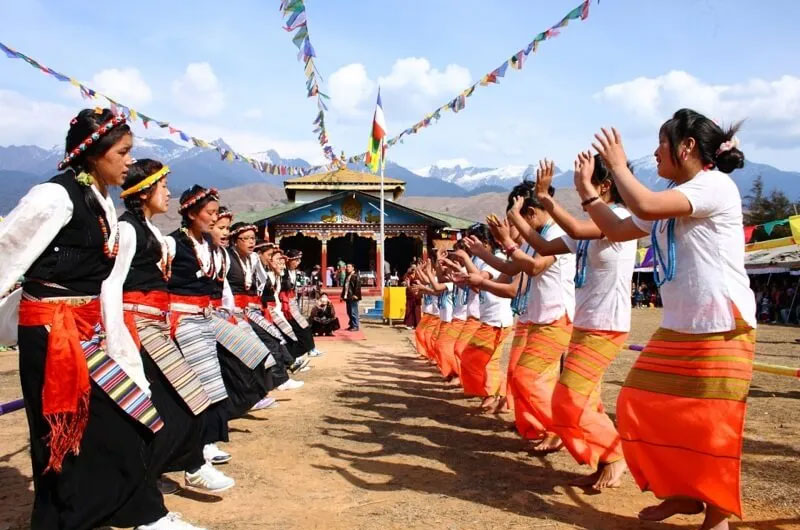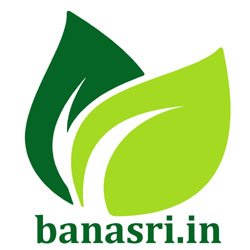
Festivals of Ladakh: Celebrating Himalayan Culture and Spirituality
These festivals in Ladakh not only reflect the region’s deep-rooted cultural heritage but also provide a glimpse into its spiritual richness and vibrant traditions, attracting visitors from across the globe to experience the unique celebrations amidst the majestic Himalayan landscape.
1. Hemis Festival
Time of Festival
- Celebrated in June or July, according to the Tibetan lunar calendar.
Specialty of the Festival
- Hemis Festival is the largest and most famous monastery festival in Ladakh.
- Celebrates the birth anniversary of Guru Padmasambhava (Guru Rinpoche), the founder of Tibetan Buddhism.
- Features colorful masked dances (Cham dances), traditional music, and rituals performed by Lamas.
Locality of the Festival
- Celebrated at Hemis Monastery, located about 45 km from Leh, the capital of Ladakh.
Nature of the Festival
- Cultural and religious.
- Showcases Tibetan Buddhist traditions, rituals, and ancient customs.
- Attracts tourists and devotees from around the world to witness the vibrant cultural heritage of Ladakh.
2. Losar Festival (Ladakhi New Year)
Time of Festival
- Celebrated in December-January, according to the Tibetan lunar calendar.
Specialty of the Festival
- Losar marks the beginning of the Tibetan New Year in Ladakh.
- Involves rituals, prayers, and cultural performances to ward off evil spirits and welcome a prosperous new year.
- Includes traditional music, dance (like Chhams), and elaborate feasts with local delicacies.
Locality of the Festival
- Celebrated across all regions of Ladakh, including Leh, Nubra Valley, and Changthang.
Nature of the Festival
- Cultural and spiritual.
- Emphasis on purification, renewal, and community unity.
- Families gather to exchange greetings, perform religious rituals, and visit monasteries for blessings.
3. Sindhu Darshan Festival
Time of Festival
- Celebrated in June, usually on the full moon day (Guru Purnima).
Specialty of the Festival
- Sindhu Darshan Festival celebrates the Indus River (Sindhu) as a symbol of India’s cultural identity and unity.
- Inaugurated with prayers, cultural programs, and a ceremonial bath in the river.
- Showcases cultural performances, traditional music, and handicraft exhibitions.
Locality of the Festival
- Celebrated along the banks of the Indus River in Leh, Shey, and nearby areas.
Nature of the Festival
- Cultural and patriotic.
- Promotes national integration, communal harmony, and cultural exchange.
- Attracts visitors, including artists, scholars, and tourists, to celebrate the cultural richness of Ladakh.
4. Ladakh Festival
Time of Festival
- Celebrated in September, for about two weeks.
Specialty of the Festival
- Ladakh Festival showcases the region’s rich cultural heritage, traditional arts, and vibrant folk performances.
- Includes traditional dance forms (like folk dances and mask dances), music, archery competitions, and polo matches.
- Features exhibitions of local handicrafts, food stalls with Ladakhi cuisine, and cultural processions.
Locality of the Festival
- Celebrated across Leh, Kargil, and various villages of Ladakh region.
Nature of the Festival
- Cultural and festive.
- Celebrates Ladakh’s diversity, craftsmanship, and ancient traditions.
- Provides a platform for local artists, craftsmen, and performers to showcase their talents and skills.
5. Dosmoche Festival
Time of Festival
- Celebrated in February, before the commencement of the Tibetan New Year.
Specialty of the Festival
- Dosmoche is a winter festival celebrated with masked dances (Chhams) and rituals to drive away evil spirits and bring peace.
- Involves offerings, prayers, and a symbolic battle between good and evil forces.
- Community participation in cultural performances, feasting, and social gatherings.
Locality of the Festival
- Celebrated in Leh, Likir, and other monasteries of Ladakh region.
Nature of the Festival
- Religious and cultural.
- Reinforces spiritual beliefs, community harmony, and social cohesion.
- Highlights traditional rituals, folklore, and artistic expressions through dance, music, and theater.
6. Yuru Kabgyat Festival
Time of Festival
- Celebrated in July, usually for two days.
Specialty of the Festival
- Yuru Kabgyat is a significant Buddhist festival held at Lamayuru Monastery.
- Involves masked dance performances (Chhams), prayers, and rituals to commemorate the victory of good over evil.
- Represents the spiritual teachings of Buddhism through colorful costumes and symbolic gestures.
Locality of the Festival
- Celebrated at Lamayuru Monastery, situated about 125 km from Leh.
Nature of the Festival
- Religious and cultural.
- Draws devotees and tourists to witness ancient Buddhist rituals and cultural traditions.
- Promotes peace, compassion, and spiritual enlightenment through religious discourses and meditation practices.
7. Phyang Tsedup Festival
Time of Festival
- Celebrated in July, typically for two days.
Specialty of the Festival
- Phyang Tsedup is a monastery festival celebrated with masked dance performances (Chhams) and religious rituals.
- Highlights the victory of good over evil and the teachings of Buddhism.
- Includes prayers, chanting, and cultural programs to invoke blessings and protect the community.
Locality of the Festival
- Celebrated at Phyang Monastery, located about 15 km west of Leh.
Nature of the Festival
- Religious and cultural.
- Preserves Buddhist traditions, philosophical teachings, and spiritual practices.
- Attracts devotees, scholars, and tourists to experience the spiritual ambiance and cultural richness of Ladakh.
8. Takthok Tsechu
Time of Festival
- Celebrated in July or August.
Specialty of the Festival
- Takthok Tsechu celebrates the foundation of Takthok Monastery, known for its cave temple.
- Features masked dances (Chhams), rituals, and prayers performed by monks.
- Emphasizes Buddhist teachings, community rituals, and collective prayers for peace and prosperity.
Locality of the Festival
- Celebrated at Takthok Monastery, located about 46 km from Leh.
Nature of the Festival
- Religious and cultural.
- Showcases the unique architecture of Takthok Monastery and its spiritual significance.
- Provides insights into Buddhist philosophy, meditation practices, and communal celebrations.
9. Spituk Gustor Festival
Time of Festival
- Celebrated in January, usually for two days.
Specialty of the Festival
- Spituk Gustor is a winter festival celebrated with masked dance performances (Chhams) and rituals at Spituk Monastery.
- Commemorates the victory of good over evil and the establishment of the Gelugpa sect of Tibetan Buddhism.
- Includes prayers, offerings, and cultural performances to seek blessings and protect the community.
Locality of the Festival
- Celebrated at Spituk Monastery, located near Leh in Ladakh region.
Nature of the Festival
- Religious and cultural.
- Provides spiritual guidance, cultural insights, and community bonding through Buddhist rituals.
- Promotes harmony, compassion, and awareness of Buddhist traditions among locals and visitors alike.
10. Naropa Festival (Kumbh Mela of the Himalayas)
Time of Festival
- Celebrated once every twelve years, with a special celebration every year before the actual Naropa Festival.
Specialty of the Festival
- Naropa Festival is one of the largest Buddhist festivals in the Himalayas, attracting thousands of devotees and tourists.
- Celebrates the life and teachings of the Indian Buddhist scholar-saint Naropa.
- Highlights include cultural performances, mask dances, religious rituals, and the unveiling of a sacred thangka (painting).
Locality of the Festival
- Celebrated at Hemis Monastery, with a massive gathering of devotees and tourists from around the world.
Nature of the Festival
- Religious and cultural pilgrimage.
- Revered as a spiritual journey and a rare opportunity to witness Himalayan Buddhist traditions.
- Promotes peace, harmony, and the preservation of Buddhist heritage through cultural exchange and communal prayers.
